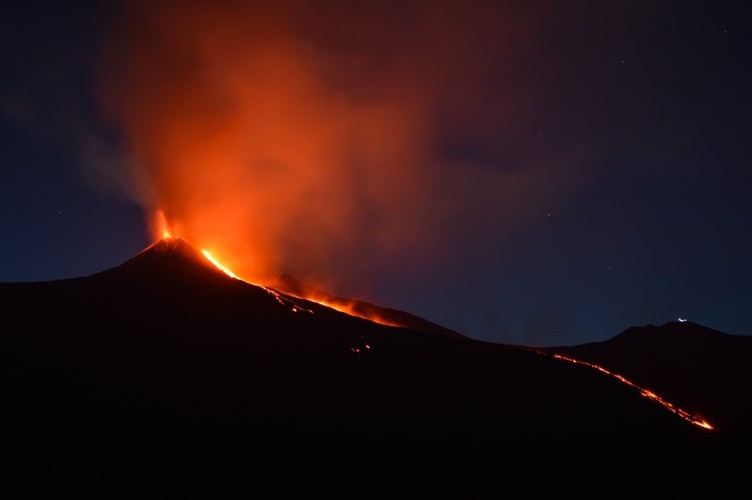The beautiful Mount Etna is erupting in the Mediterranean with such force that it has drawn the attention of the astronauts of the International Space Station.
Members of Expedition 66, which is now in orbit, provided some views of the volcano from space, which erupted dozens of times alone in the last year.
Not a very clean shot since there is way too much humidity in Europe’s air at the moment but @astro_luca's home volcano #Etna is clearly smoking (and spitting lava as I learnt from the news) 🌋 pic.twitter.com/gL5uNOkZUy
— Matthias Maurer (@astro_matthias) February 12, 2022
On the Russian side of the space station, Roscosmos astronaut Anton Shkaplerov transmitted a report down from orbit. "Red-hot lava oozes out of the crater, clouding the sky with ash and smoke over Sicily; the volcano's activity briefly slows, then continues with a series of explosions," as mentioned in a report in Space.
Related Article: Satellite Images Show Europe's Most Active Volcano Mt. Etna as it Erupts for 50th Time This Year
Mt. Etna Through the Ages
Mount Etna expanded 100 feet (30 meters) in half a year in 2021 because it was so active. Astronauts may help with satellite observations of natural events like volcanoes and storms by taking the International Space Station photos.
Volcanic plumes may reach extremely high heights, posing a threat to aviation traffic. At the same time, sulfur dioxide near the ground can irritate the human respiratory system, triggering asthma and other respiratory problems.
Mt. Etna's Activity

Mount Etna is thought to be an underground volcano that erupted above sea level owing to hardened lava after multiple eruptions, according to NASA's Earth Observatory. From as far back as 300,000 years ago, lava flows cover the mountain's surface.
Etna is an active stratovolcano on Sicily's east coast, between Messina and Catania, in the Metropolitan City of Catania. Above the convergent plate border, it separates the African and Eurasian plates. It is one of Europe's tallest active volcanoes and Italy's highest mountain south of the Alps.
Zeus, the deity of the sky and thunder and ruler of gods, was claimed to have confined the terrible monster Typhon beneath this mountain, and the forges of Hephaestus were also thought to be beneath it in Greek mythology.
Volcanism
Mount Etna is one of the world's most active volcanoes, with almost daily eruptions. Vineyards and orchards are scattered throughout the lower slopes of the mountain and the vast Plain of Catania to the south, thanks the excellent volcanic soils.
Mount Etna has been declared a Decade Volcano by the United Nations due to its recent activity and proximity to a population. It was added to the UNESCO World Heritage Sites list in June 2013.
About 500,000 years ago, volcanic activity began on Mount Etna, eruptions happening beneath the sea along Sicily's ancient shoreline.
Volcanism started around 300,000 years ago to the southwest of the peak (the volcano's center top), then shifted to the present-day center 170,000 years ago. At this epoch, alternating explosive and effusive eruptions built up the first significant volcanic structure, generating a stratovolcano. Major eruptions periodically disrupted the mountain's development, resulting in the peak collapsing and forming calderas.
For similar news, don't forget to follow Nature World News!
© 2025 NatureWorldNews.com All rights reserved. Do not reproduce without permission.





